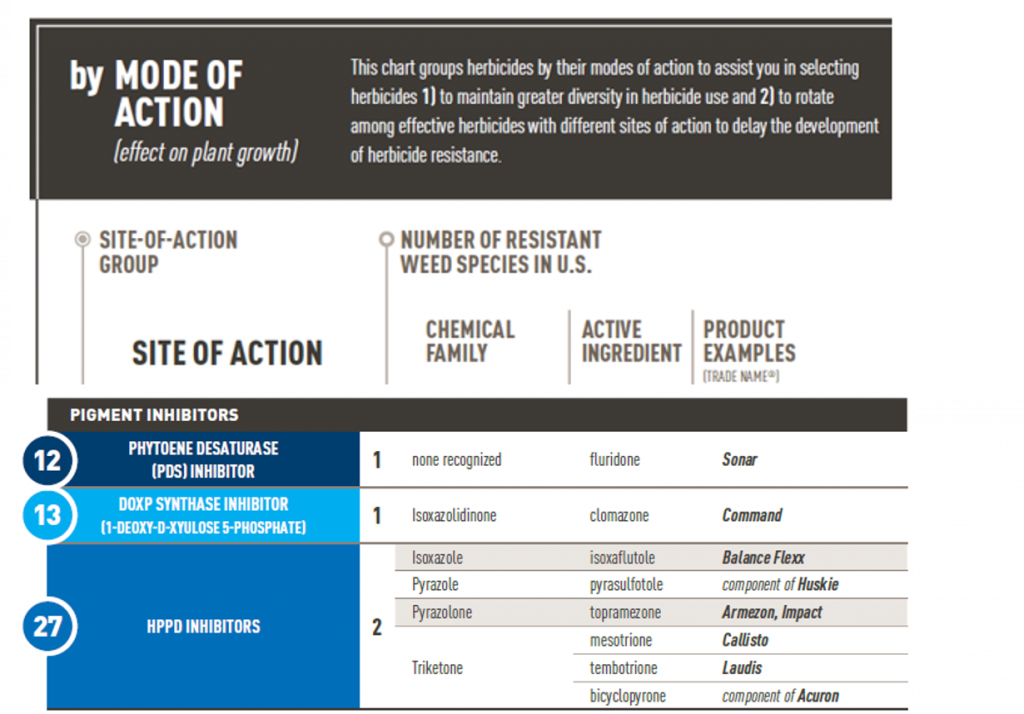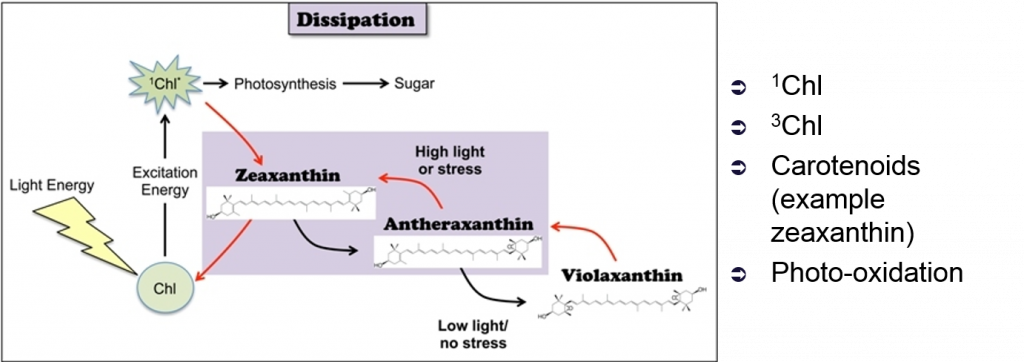Chapter 18: MOA Part 4 – Photosynthesis Inhibitors (PPO & Pigment Inhibitors)
18.6 Pigment Inhibitors and Importance of Carotenoids

The second mode of action discussed in this chapter is the Pigment Inhibitors. These are sometimes also referred to as Carotenoid Biosynthesis Inhibitors. There are four Sites of Action for this group as indicated in the table above. Injury symptoms from these herbicides are the same.
Carotenoids play a role in photosynthesis by harvesting light and transferring the captured energy to chlorophyll molecules within the photosynthetic apparatus. However, carotenoids play three essential protective roles in the photosynthetic apparatus. They do this because they are highly effective quenchers, having the ability to absorb excitation energy and dissipate it harmlessly as heat. The first protective role is the ability to quench triplet chlorophyll molecules back to the ground state. The second is to quench singlet oxygen molecules (which are destructive) back to the normal triplet state (oxygen is unusual in that its triplet state is more stable than its singlet state). The third role is in quenching the photosystem reaction centers when overexcited in very bright light.
Inhibitors of carotenoid biosynthesis cause a general bleaching of the plant. This is because each time a chlorophyll molecule absorbs the energy from a photon there is a small, but finite chance that it will generate a triplet state. Without the presence of carotenoids to quench triplet chlorophyll, active oxygen species are generated and destroy the photosynthetic apparatus within the thylakoid membrane of the chloroplast. Destruction of chlorophyll causes a bleaching of the leaf.
The diagram here helps to illustrate this. On the left, a photon of sunlight is hitting a chlorophyll molecule, which is important in photosynthesis. However, in some rare events, the charged state of chlorophyll can turn into a triplet version that can create damage in the plant. This is where carotenoids come into play, in this case zeaxanthin which helps to dissipate this energy as heat and bring the chlorophyll back to a grounded, safe state. This is just one example of how carotenoids prevent damage from intense sunlight.

Review and Reflection